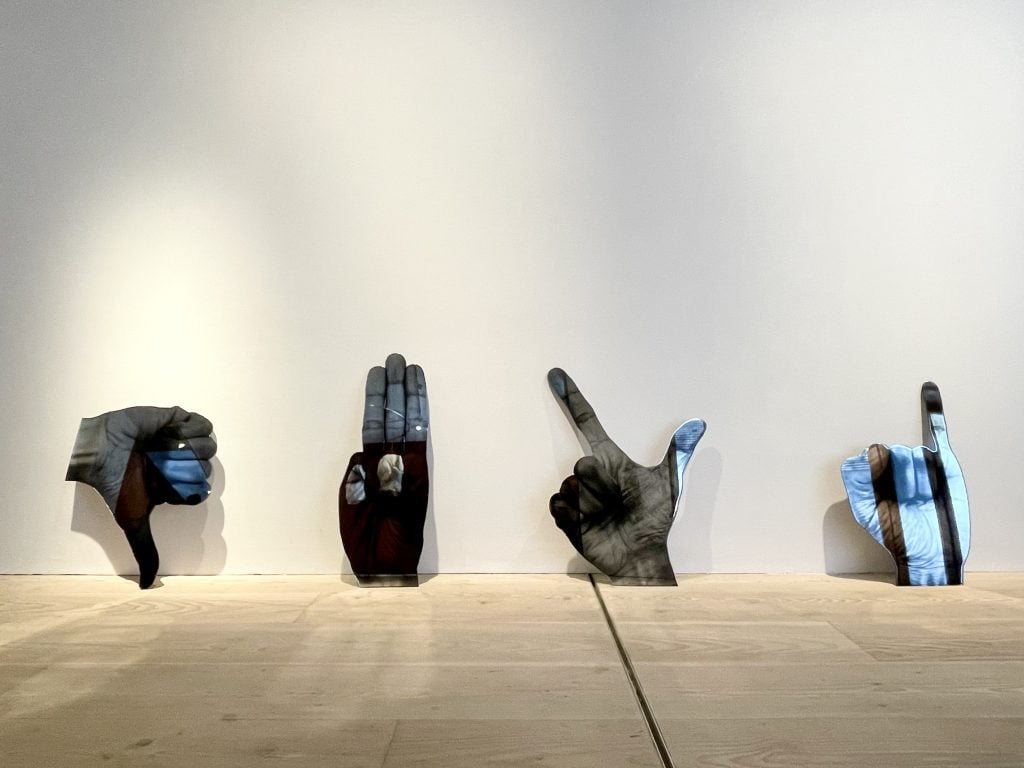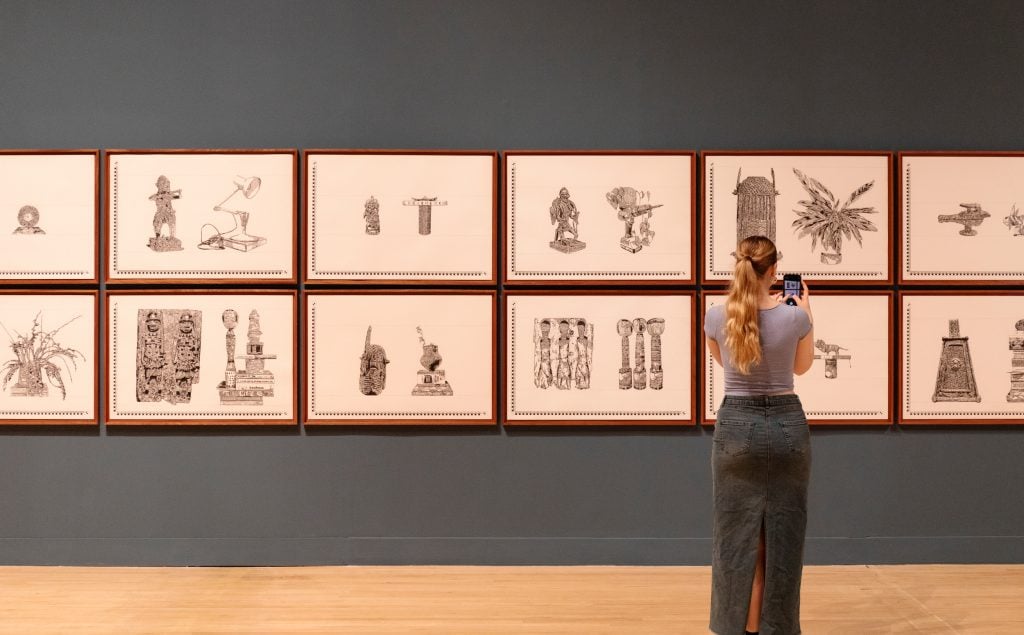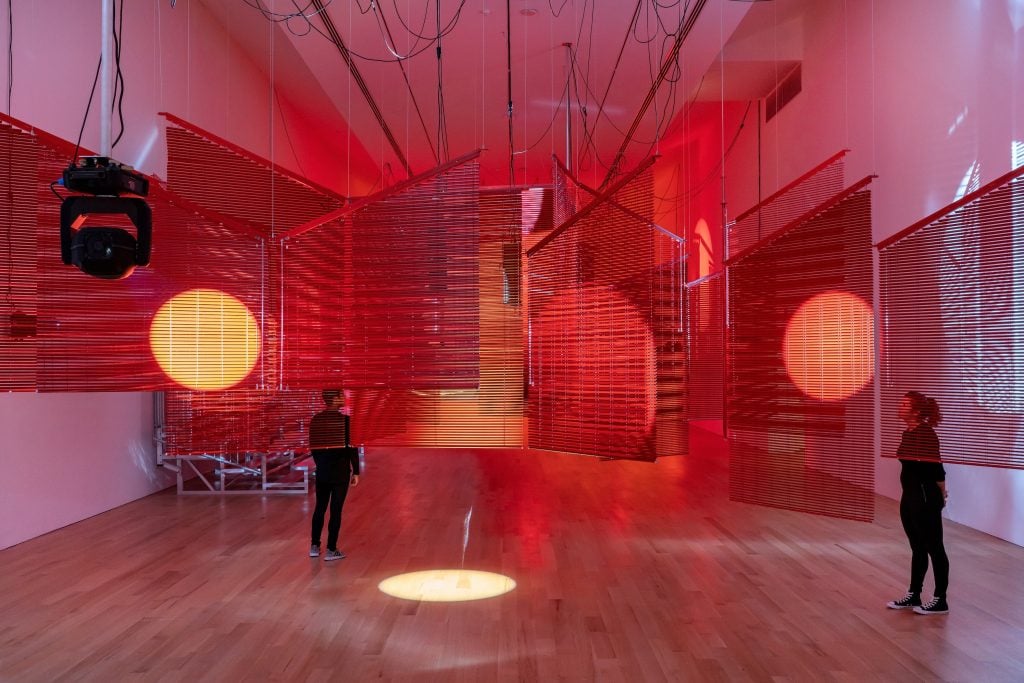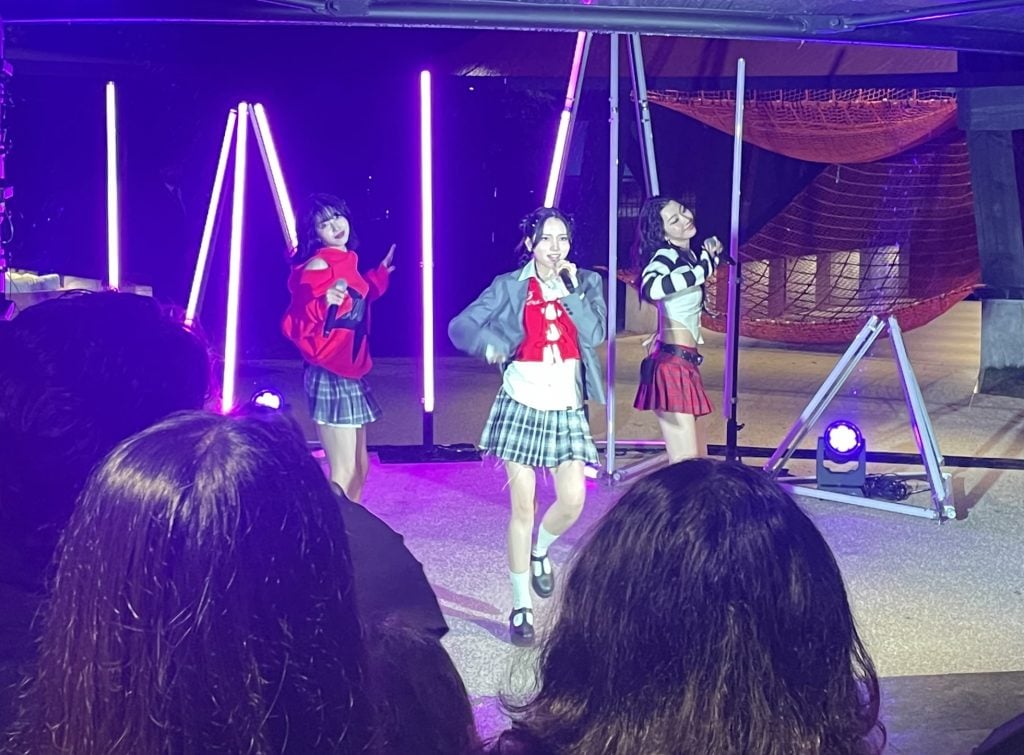Market
Asian Artists Are Everywhere During Frieze London, With K-Art (and K-Pop!) Front and Center
Haegue Yang is at the Hayward, Mire Lee is at Tate Modern, the Japanese band IS:SUE was at the Serpentine, and the thrilling list goes on.

Haegue Yang is at the Hayward, Mire Lee is at Tate Modern, the Japanese band IS:SUE was at the Serpentine, and the thrilling list goes on.

Vivienne Chow

The Big Picture is excerpted from The Asia Pivot, Artnet Pro’s biweekly members-only newsletter providing mission-critical analysis, insights, and exclusive intelligence on developments in Asia’s art markets, with a focus on business opportunities and challenges. Subscribe here to receive it directly to your inbox.
At a recent luncheon for the Delfina Foundation in London, a week before Frieze madness began, two artists with Asian roots reunited. One was Moe Satt, the artist from Myanmar who just opened a solo exhibition at the foundation. The other was Pio Abad, the London-based, Manila-born artist nominated for the 2024 Turner Prize, whose annual show of finalists just opened at Tate Britain. They have known each other for over a decade, but when they first met, they never could have imagined that they would one day be exhibiting in the British capital at the same time.
Abad, who has lived in the U.K. for two decades, told me that he feels that the visibility of Asian artists has gradually improved in the country, for both locally based diasporic artists with Asian roots and artists coming from Asia. As if to prove his point, there is an unprecedentedly strong presence of Asian artists in London this Frieze Week.

Installation view of Pio Abad’s presentation in “Turner Prize 2024” at Tate Britain from September 25, 2024 —February 16, 2025. Photo: Josh Croll, © Tate Photography.
On the commercial-gallery front, the London-based, Beijing-born artist Vivien Zhang is opening a solo show, “Flat Earth,” at Pilar Corrias this week, New Delhi’s Vadehra Art Gallery is staging a pop-up of Indian artist Sudhir Patwardhan’s paintings and drawings at No. 9 Cork Street, and of course, there is Yayoi Kusama at Victoria Miro (her tallest Pumpkin is also on view in Kensington Gardens presented by Serpentine and the Royal Parks). Meanwhile, A.I. Gallery is currently presenting Singaporean-born artist Kent Chan’s solo show, “Solar Masses,” which challenges the residue of the colonial era through video and installation works. Los Angeles-based Taiwan-born artist Su Yu-Xin will have her first U.K. solo “Precious” at Albion Jeune, showcasing a series of paintings incorporating ground cowrie shells that reflect on the history of migration and complex identities. Oxford-based writer and curator Yiren Shen has curated “Still Spinning,” a solo exhibition of London-based painter and musician Dylan Doe at 3 Albert Hall Mansion, drawing inspirations from Byung-Chul Han, a South Korean-born philosopher and cultural theorist living in Germany.

“Solar Masses,” solo exhibition of Kent Chan at A.I. Gallery. Courtesy artist and A.I. Gallery.
Asian artists are even more active at the institutional level right now. Studio Voltaire just opened Lap-See Lam’s first U.K. institutional solo, “Floating Sea Palace,” which she developed from her presentation at the Nordic Pavilion in the current Venice Biennale. (Lam, a Swedish artist of Hong Kong Cantonese heritage, is the first artist of East Asian descent to be featured at the Nordic Pavilion.)
Gasworks is presenting a solo show by the Indonesian artist and filmmaker Riar Rizaldi, “Mirage,” and this week the Barbican opens “The Imaginary Institution of India: Art 1975–1998,” a landmark group show featuring more than 30 Indian artists.

Haegue Yang, Red Broken Mountainous Labyrinth (2008) in “Haegue Yang: In the Cone of Uncertainty,” The Bass Museum of Art, Miami Beach, USA, 2019, © Haegue Yang. Photo: Zachary Balber. Courtesy The Bass Museum of Art, Miami Beach.
The third edition of Frieze Seoul concluded a month ago, and the presence of Korean artists in the U.K. capital this week is especially notable. Today, the Hayward Gallery is inaugurating Haegue Yang’s first U.K. institutional solo show, “Leap Year,” curated by Yung Ma. Its opening goes head-to-head with that of Mire Lee, who is unveiling her new work in Tate Modern’s Turbine Hall for its Hyundai Commission. At the same time, artist and choreographer Geumhyung Jeong is performing at the ICA as part of her solo exhibition “Under Construction.” (Jeong will also perform on October 9 and in November). Paintings, sculptures, and video works by Heemin Chung are featured in “UMBRA,” her first solo with Thaddaeus Ropac. And the up-and-coming Seoul gallery Cylinder is showing Eunsil Lee’s paintings in a solo exhibition called “Treachery Skin” at No. 9 Cork Street. All of these events are backed by public and private funding from South Korea.

Girls’ group IS:SUE performed at K-pop Night at Serpentine Pavilion backed by CJ ENM on October 6, 2024. Photo: Vivienne Chow.
The list does not end there! Besides exhibitions starring Korean artists, K-culture promoters are using Frieze Week in to further expand their influence. Kicking off the week a K-pop Night, on Sunday, celebrating this year’s Serpentine Pavilion, which was designed by the Korean architect Minsuk Cho and his firm Mass Studies. The cocktail reception, backed by Korean entertainment giant CJ ENM, was more than just an occasion to entertain VIPs; it was also a teaser for the next wave of K-pop.
The 35-minute performance featured a surprising lineup of K-pop acts: dancer and choreographer Leejung, the new Japan-based girl band IS:SUE, whose members were contestants on the reality show Produce Japan 101 (the Japanese version of a hit CJ ENM series in South Korea), and singer-songwriter Roy Kim, who’s best known for his Korean ballads. “Culture is the biggest strength to get us out there,” Kim said on stage. Miky Lee, the vice chair of the Korean entertainment conglomerate, was in the audience and looked pleased. The Koreans will return to the Serpentine this Saturday for a K-art event backed by the Korean Arts Management Service (KAMS). A Korean Culture Month is also being spearheaded by the Korean Cultural Council in the U.K.
The major presence of Asian artists in London is a continuation of what we have seen in Venice, which we covered earlier this year. Will these artists earn a strong following in the West, as their Western counterparts have in Asia? Will this become a sustainable trend and reshape the discourse around Asian contemporary art in the West? The Asia Pivot has learned that more industry players are looking at this space, with more new initiatives to come in 2025. Stay tuned.